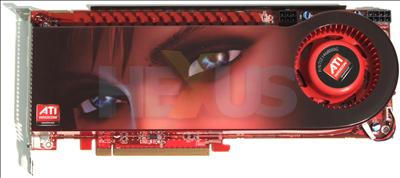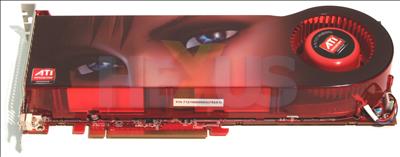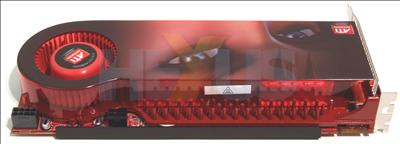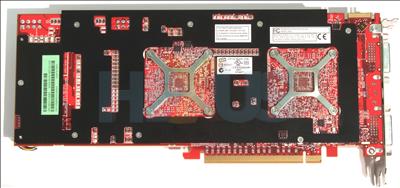Big and chunky
Big and chunky come to mind, and we're not talking about Ruby here. The card measures an impressive 266mm x 112mm x 34mm (w x h x d). Somewhat worryingly, it tips the scales at just over 1kg - 1,024g, to be exact.
Remember, the external interface is PCIe 2.0 but the inter-GPU communication is PCIe 1.1. We expect to see an X2 revision with faster memory clocks and a PCIe 2.0 bridge.
The internal CrossFire mode cannot be turned off, should gaming suffer from sub-optimal and sub-single-GPU performance.
One advantage of having an all-in-one CrossFire design lies with running the card in a single x16 PCIe slot - you don't need to invest in a CrossFire-compatible motherboard, of course.
The reference board ships with both eight-pin and six-pin power connectors - a la Radeon 2900 XT. Given a board TDP rating of around 196W, it requires two six-pin connectors or, preferable when overclocking, one six-pin and eight-pin connector from the PSU. What's annoying is that it won't function with the single eight-pin connector attached, which does provide enough power.
We note that the card still consumes less power than a single Radeon HD 2900 XT.
The heatsink is more substantial than a Radeon HD 3870's, but that's hardly surprising given the extra heat being dissipated. Both are dual-slot-taking models, though.
The fan was quiet under sustained load and barely any louder than the already-quiet model found on reference 3870s.
We observed idle and load temps of 55C and 79C, respectively, which are lower than a regular single-GPU's, incidentally. The big-ass cooler works, and works well.
We'd hoped to see an extra array of output options from a card housing two GPUs. Rather, the display outputs are routed via the primary GPU and thus the X2 functions as a regular card in 2D mode but can only output video to the primary display when 3D gaming. DisplayPort connectivity, standard on the lower echelons of the HD 3000-series, can be implemented by an external ASIC.
Mucho grande!















